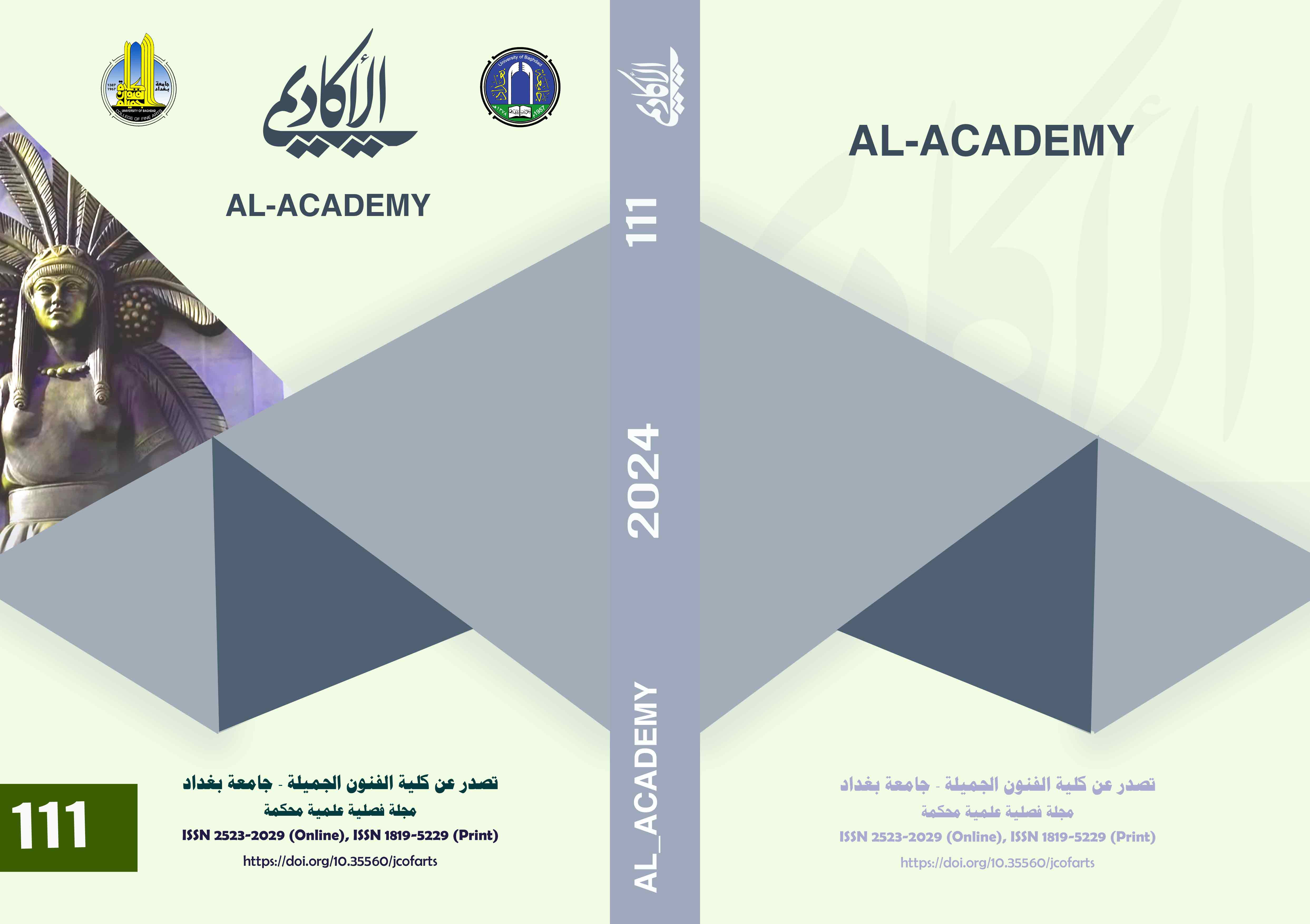Value and its aesthetic elements in Renaissance art
DOI:
https://doi.org/10.35560/jcofarts1284Keywords:
Aesthetic value aesthetic elements Renaissance artAbstract
The current research dealt with (value and its aesthetic elements in Renaissance art), by studying value and its aesthetic elements in the drawings of Renaissance artists. The first chapter dealt with the problem of the research, its importance and the need for it, and the goal of the research, which was represented by the following: “Value and its aesthetic elements in Renaissance art,” then concluded. The aforementioned chapter defines the terms that are related to the research title. The second chapter includes a presentation of the theoretical framework and previous studies, and consists of two sections: the first section is the nature of value and its aesthetic elements. The second section: Aesthetic values in Renaissance thought. The third chapter specializes in research procedures: the research community, the research sample, the research methodology, the research tool, and analysis of the sample that included (3) works of art. The fourth chapter ended with the research results, including: Aesthetic and artistic values are values that contain many values of aesthetic elements. Conclusions include: European Renaissance paintings tend towards visual embodiment, but with a different content. Then recommendations and suggestions.
References
Abdel Hamid, S. (1994). Aesthetic preference (a study of the psychology of taste) (Vol. 1). Tripoli, Lebanon: Gross Press Press.
Al-Qurashi, I.-D. b. (1998). Interpretation of the Great Qur’an. Riyadh: Dar al-Fayhaa, Damascus and Dar al-Salam Library.
Al-Sabbagh, R. (1998). Evaluative rulings on beauty and morals (Vol. 1). Alexandria: Dar Al-Wafa’ for the World of Printing and Publishing.
Al-Sabbagh, R. (1998). On the Ethical and Social Interpretation of Art (Vol. 1). Alexandria: Dar Al-Wafaa for the World of Printing and Publishing.
Al-Sabbagh, R. (2002). Aesthetics of Art - The Ethical and Social Framework. Alexandria: Dar Al-Wafaa for the World of Printing and Publishing.
Baalbaki, M. (2001). Al-Mawrid (Vol. 1st edition). Beirut.
Crochet, B. (1947). Al-Mujmal fi Philosophy of Art (Vol. 1). (S. Al-Droubi, Trans.) Dar Al-Fikr Al-Arabi.
Fall, J. (1967). The Way of the Philosopher. (A. Hamdi, & A.-A. Afifi, Trans.) Arab Record Foundation.
Hauser, A. (1968). The Philosophy of the History of Art. (R. A. Girgis,, Trans.) Cairo University: General Authority for Books and Scientific Equipment.
Hauser, A. (1969). Art and Society Throughout History (Vol. 2). (F. Zakaria, Trans.) Cairo: Dar Al-Kitab Al-Arabi for Printing and Publishing.
Huwaidi, Y. (1979). Introduction to General Philosophy (Vol. 9). Cairo: House of Culture, Printing and Publishing.
Madkour, I. (1979). The Philosophical Dictionary. Cairo: General Authority for Princely Printing Affairs.
Nazmi, M. (1978). Creativity in Aesthetics. Alexandria,: Dar Al-Maaref.
Nazmi, M. A. (1984). Aesthetic Values. Cairo: Dar Al-Maaref.
Ovesannikov, M., g, & Samir Nova. (1979). A Brief History of Aesthetic Theories. (B. Al-Saqqa, Trans.) Beirut: Al-Farabi Publishing House.
Downloads
Published
Issue
Section
License
Copyright (c) 2024 Farah Hussein Kazem Ahmed

This work is licensed under a Creative Commons Attribution 4.0 International License.













